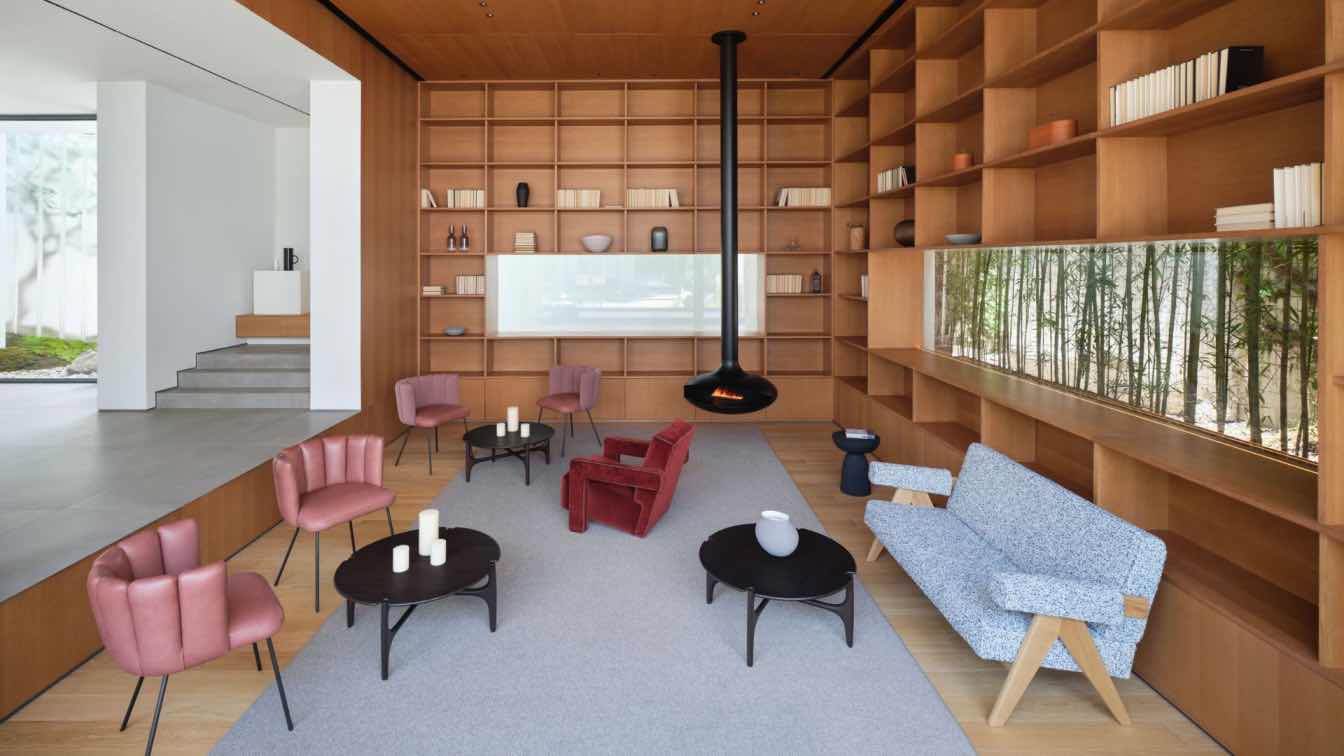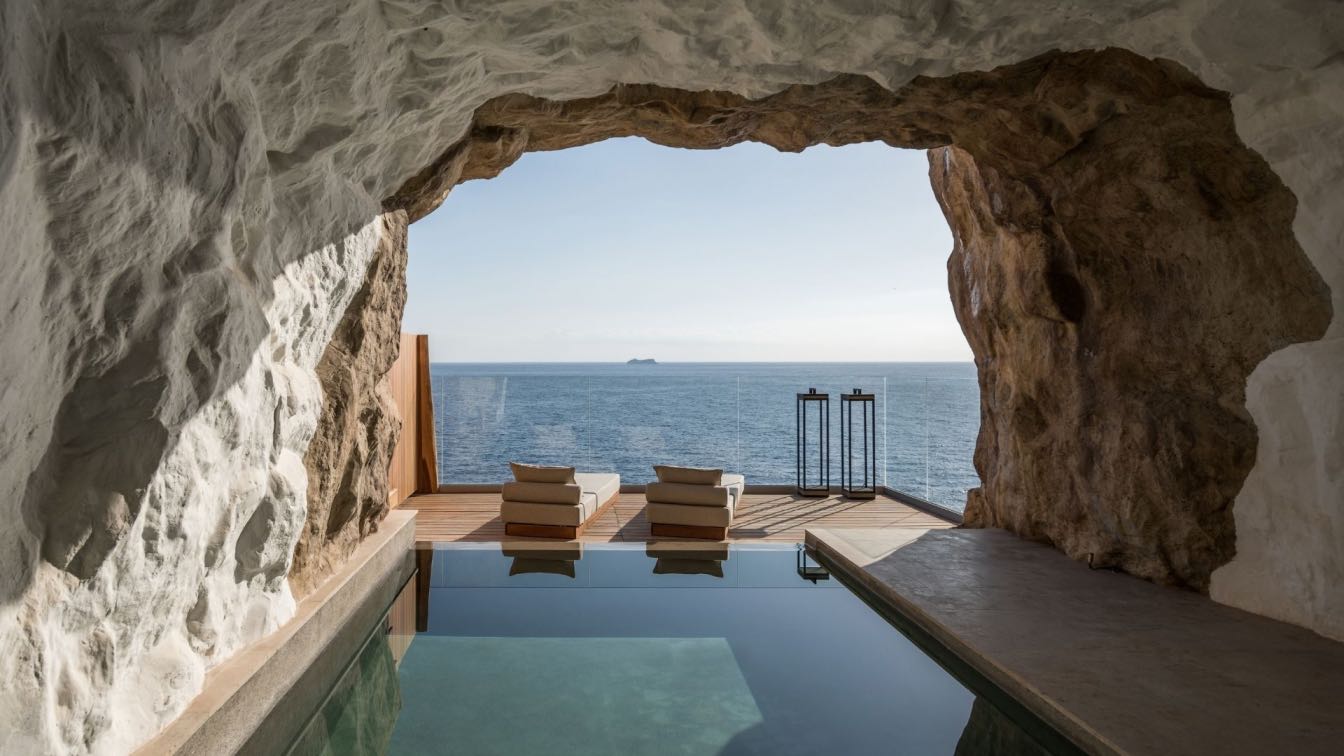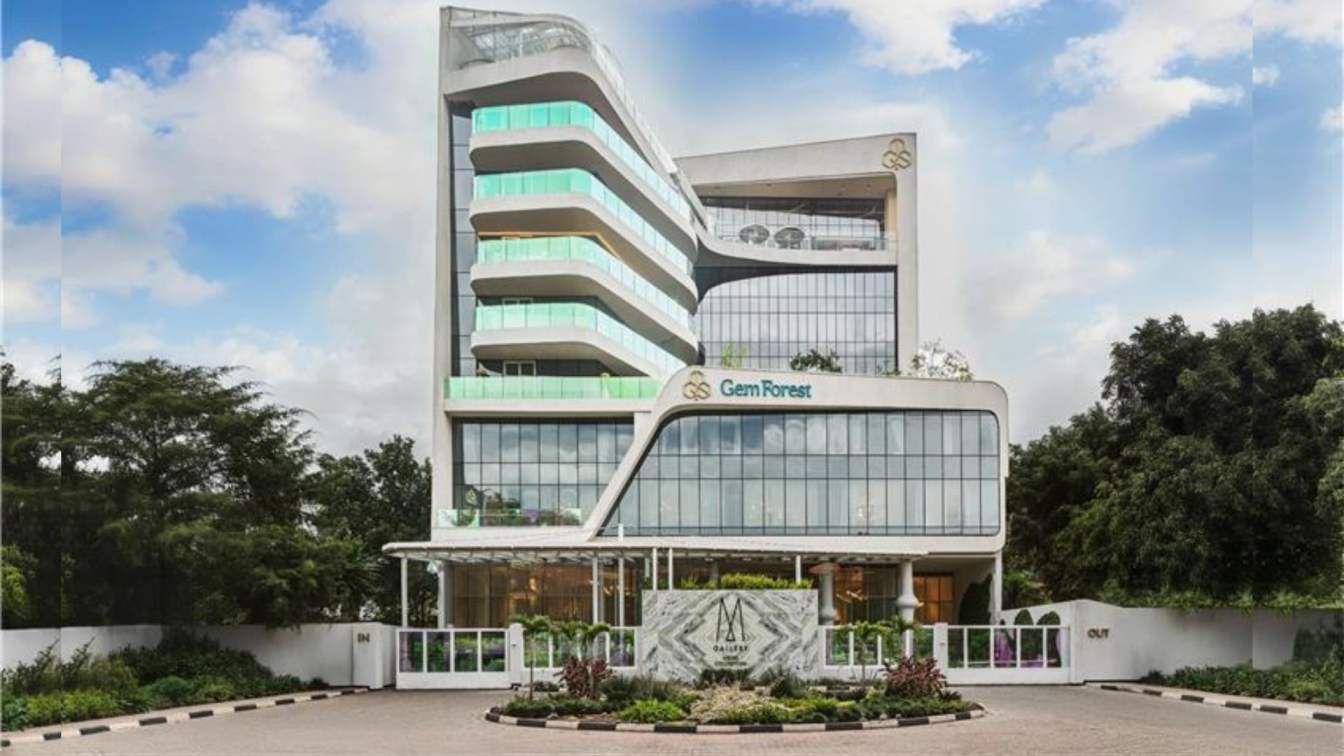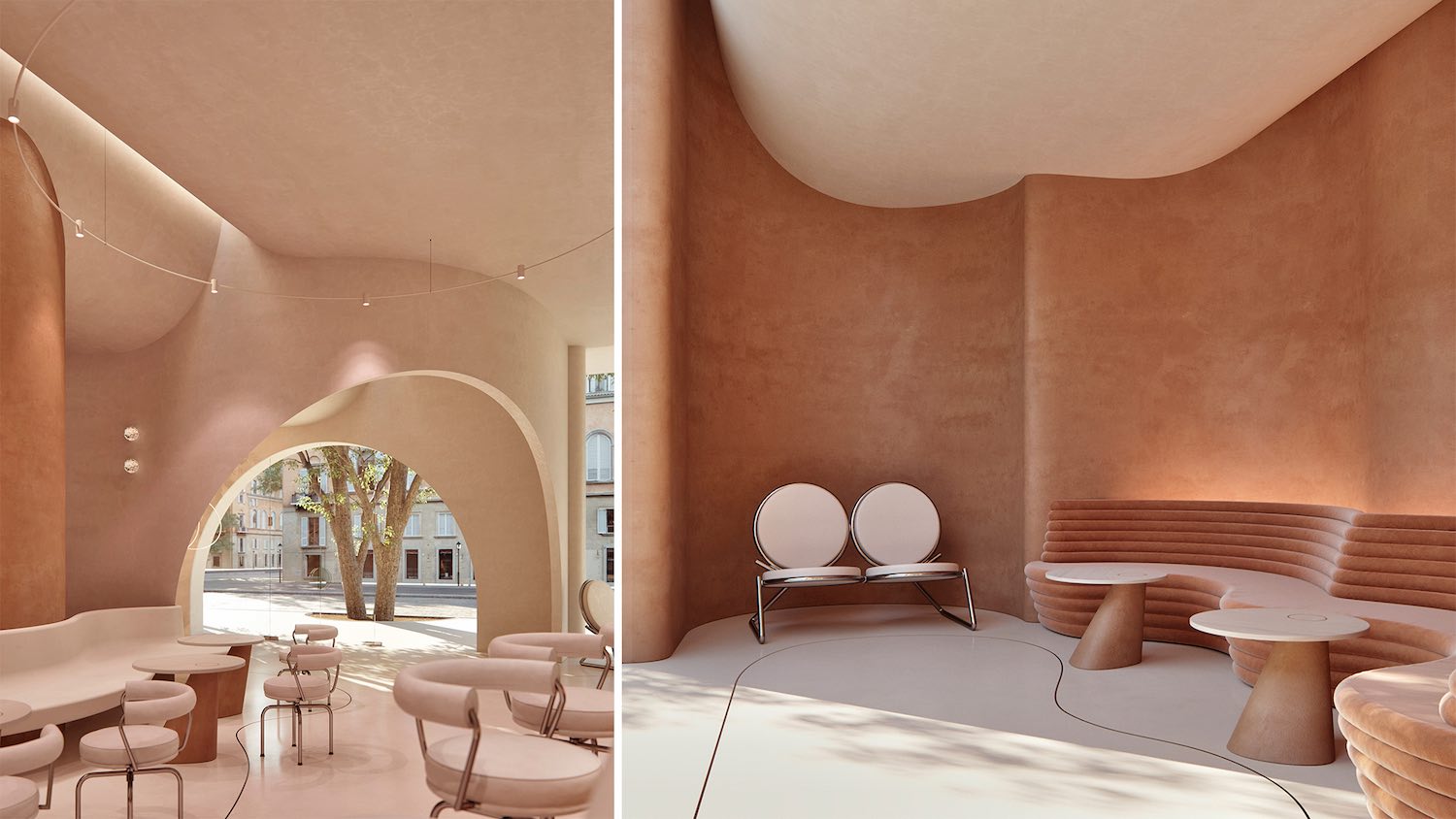A Reinterpretation of Jiangnan Aesthetics in the Ancient City of Suzhou.
Designer Zhang Haihua has completed a boutique hotel project in the ancient city district of Suzhou, transforming three existing residential buildings into a courtyard building whose layout is inspired by the region’s traditional Jiangnan-style houses. This commission presented an exciting opportunity for Zhang, who was born and raised in Suzhou himself, as it offered the chance to develop a contemporary aesthetic for a hotel located within the ancient city and its strong sense of place, and to contemplate the special meaning of this type of project in a unique spatial, social, and historical context.
Chapter I Traversing by Water
The Ming Dynasty painter Shen Zhou wrote that southern China, known at the time as the state of Wu, was defined by its relationship to the water which surrounds it. From the Song Dynasty to today, the urban layout of Suzhou - long famed for its numerous canals - has fundamentally evolved. During the early 20th century, there were still many lakes in the Yangcheng and Wujiang districts of Suzhou, creating a distinctive landform within the city.
When looking at a map of Suzhou, its unique urban layout becomes evident – water interweaves ubiquitously throughout the city, its canals providing an added layer of urban circulation: people here can either walk the streets or traverse the city by boat. Many picturesque neighborhoods have been established over the years, such as the “Fisherman’s Quarter” in the Taihu Lake Basin, where writers and painters have traditionally resided, having built modest houses by the water. People who caught fish on the river could immediately sell them to residents adjacent to the water through their windows. Zhang Haihua remembers buying vegetables when he was young, by taking a basket and setting out on a boat.
Boating on canals, as an important mode of transportation in ancient Suzhou, served as a key frame of reference for the design of the hotel. Zhang has provided for an informal lounge space to one side of the lobby area, at a slightly lower level than the main floor. In doing so, it recalls the traditional height one would have when observing the city by boat, while creating an intimate relationship with the external courtyard landscape.

With its low floor level, the lounge functions as a modern version of a traditional Chinese central hall, incorporating Italian Cassina chairs and contemporary paintings, aligned with a series of openings in the space. Thus, it can be experienced as both a three-dimensional environment, and a series of framed views, echoing spatial techniques used in original Jiangnan designs.
Taking the concept of a viewpoint from a boat and applying it to the courtyard space, Zhang has created a miniature landscape which metaphorically references the natural elements of the Taihu Lake Basin, as described by ancient writers. An additional layer of design inspiration for the courtyard comes from the mountain stream pool at Zijin Temple in Dongshan, which Zhang has often visited in the past.
A small hill has been formed at the rear of the courtyard, which slopes down towards the building, its grade merging with the floor level of the interior. A Chinese tallow tree has been placed near the top of the hill, with a timber deck area at its base. There are also seven tea trees planted throughout the courtyard, allowing for fresh tea leaves to be taken in the spring and autumn. Local rocks have been set in the moss which covers the earth, and in the water which is inhabited by numerous small fish. A set of stairs merges with the terrain, forming a metaphorical walk up a mountain, inspired by the writings of Jiangnan-era authors.
Chapter II Alleyway Light and Shadow
Because Hua Xu boutique hotel is located in a historical district, the exterior of the building has been strictly controlled to comply with planning guidelines - grey and white tones have been used to synchronize with the traditional palette of Suzhou architecture, while also augmenting the contrast between light and shadow, and interior and exterior. A covered patio area has been incorporated which serves as a transition space between the courtyard and the main space of the hotel, a common element in ancient Jiangnan architecture also rooted in Zhang's memory. The deep eaves effectively frame the space, integrating the sky, the earth, the architecture, and the people who inhabit it.
At the atrium ceiling, Zhang has designed a skylight opening whose oblique surfaces narrow towards the sky, creating a dramatic framing while shadows on the surfaces below gently shift, reflecting the movement of the clouds above. The tea room is set back from the courtyard, with a set of floor to ceiling, fully glazed folding doors allowing the outdoor garden to become part of the space. Nature becomes a defining element of the room, while the elegant grey color palette and wood furniture create an ambience of calm contemplation.
Throughout the public spaces in Hua Xu boutique hotel, Zhang has taken inspiration from the tall, narrow alleyways of Suzhou’s ancient city. Their dramatic scale has left a strong impression in his memory, with their bold shadows and filtered light. So, he has reinterpreted aspects of their proportions and visual impact here in the hotel. The courtyard slate tiles extend to the edge of the reflecting pool and then around the hotel, where a narrow passageway leads to a side entrance. Here, the ancient historical walls of the neighboring buildings are brought within touching distance, their mottled, tactile texture contrasting with the new white walls of the hotel. Different eras of time and space are brought together, the new and the old eloquently echoing one another.

Chapter III Renewing Jiangnan Culture
The British architectural writer Kenneth Frampton commented on the work of Japanese architect Tadao Ando, saying that he actively upheld the progressive legacy of modernism, but developed his own version of it in order to emphasize unique regional characteristics. This is the same conceptual approach taken here by Zhang, whose aim was to create a contemporary hotel which also evoked the feeling of traditional life and aesthetics south of the Yangtze River, referencing the tactile materiality of its buildings and their closeness to the beauty of the natural environment.
In Zhang's view, Jiangnan architecture is unique in the way it effortlessly connects interior spaces to the surrounding nature, and achieves an elegant unity in function, spirit, time, and use. He wanted to capture not simply the scale and materiality of the original architecture, but the special atmosphere of the ancient city, with its long shadows, narrow alleys, and an uncanny sense of traveling back in time.
The Hua Xu boutique hotel has been conceived with a series of metaphors in mind which have served as guiding principles for its design: at one level, the project represents the relationship between Suzhou’s people and the ancient city, while the inner courtyard expresses the link between the city and the local mountains and forests. This in turn serves to evoke the relationship between man and nature in the context of Jiangnan culture, in a spirit of awe and respect for the natural world.
While Suzhou gardens and architecture are no longer seen symbolically as they once were in ancient times, they can still be appreciated at an abstract level according to each individual’s life experience and emotional understanding. Through the imaginative use of contemporary materials, techniques, and furnishings, the space undergoes a kind of alchemical transformation where the area surrounding the hotel is encapsulated in microcosm. For Zhang, Hua Xu boutique hotel represents a spatial experiment, where he set out to infuse the original spirit of traditional Jiangnan culture within a design that belongs to guests of the modern era, creating a new sense of place from the city’s ancient roots.
















































